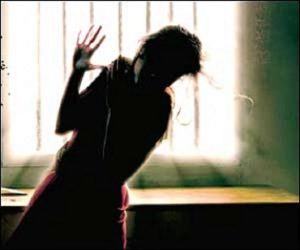Karachi: “I want acid thrown on his face and body”, said Maria Shah, aged 25, a lady health worker from Shikarpur, some 500km from Karachi.
The victim of an acid attack for refusing to marry a man, Shah sits on a bench outside the Burns Centre of Karachi’s Civil Hospital, shooing away flies with her bandaged arms. Her half-burnt face betrays signs of once beautiful features, reports IRIN, the UN information unit.
“I want him to go through the agony that I’m going through,” she said. Burnt from the face down to her thighs, she said the perpetrator was a rickshaw driver who had been hired by her family to take her to school. He has since been caught and taken to court.
One of the most horrifying forms of gender-based violence in Pakistan, throwing acid (usually sulphuric acid) on women – with malicious intent to take revenge, disfigure and harm the person – has long-lasting physical and psychological consequences, say experts.
“There have been cases of women attempting to commit suicide,” said Waqar Ansari, in charge of the intensive care unit of the Burns Centre at Civil Hospital. The causes can be morbid jealousy, vindictiveness or vengeance intended to permanently punish the woman.
Shahnaz Bokhari from the Islamabad-based Progressive Women’s Association, a local NGO, who began working for acid and burn victims back in 1994, calls the incidents “plain murder”. She said it was a “learnt behaviour” from neighbouring countries. It was at its peak in the early 1990s, in India and Bangladesh, she explained. “Now they have somewhat restrained it through strict legislation and penalties, while we’ve just brushed the issue under the carpet.”
She refuses to believe that burn cases could be mere accidents, as has been claimed. “Why are only women burnt and why, in a majority of cases, are their genitalia affected?” Saira Liaquat was just 16 and studying in Grade 10, in 2003, when her betrothed threw acid in her face to teach her family a lesson.
“He asked us time and again to marry Saira off and we kept asking him to wait for two years so she could finish her studies. ThatÂ’s all. Just for that he punished her for life,” Liaquat Ali, Saira’s father said.
There are no country-wide statistics to prove the crime has increased, since most cases go unreported, and at times the police refuse to file an affidavit. At other times, the woman’s parents knowingly do not lodge a complaint fearing for the lives of relatives.
“From 1994 to 2006, we recorded 7,990 cases that were referred to hospitals only within a 200-mile radius of Islamabad,” said Bokhari. She is opposed to the medico-legal practice of documenting the initial statement of the victim. “Obviously the victim is terrified of her attackers and will never tell the truth. The result is that the criminals remain at large.”
She said during President Pervez Musharraf’s last two years in office, the reported cases in hospitals started dropping. “To my utter horror, I learnt that through an unwritten order, hospitals had been asked not to admit burn victims,” Bokhari said, alleging that the move was intended to improve Pakistan’s standing in terms of human rights issues.
Source: The Nation
Date:2/4/2009


